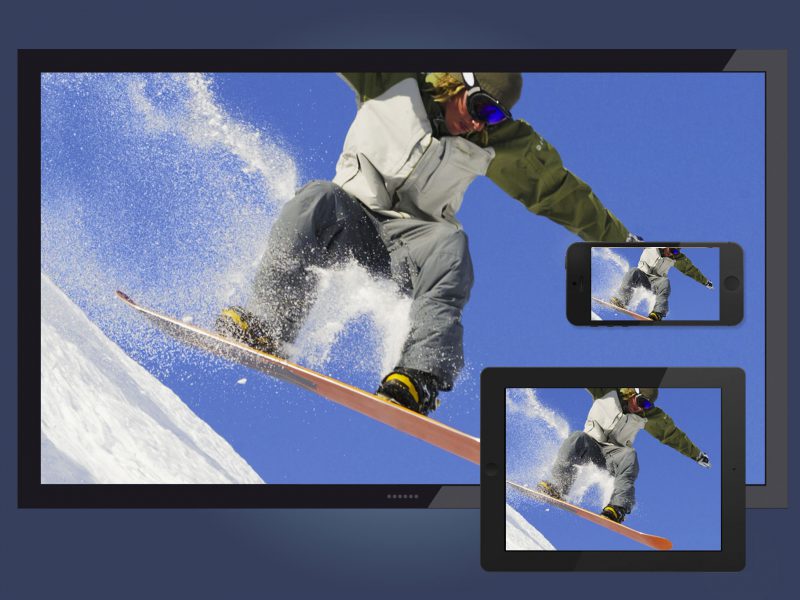Beamr just returned from the Internet & Television Expo, or INTX, previously known as the Cable Show, where we identified three technology trends that are advancing rapidly and for some, are even here now. They are HDR, Network Function Virtualization, and IP Video.
HDR (High Dynamic Range) is probably the most exciting innovation in display technology in recent years.
There is a raging debate about resolution, “are more pixels really better?” But there is no debating the visual impact of HDR. Which is why it’s great to see TVs in the market that can display HDR reaching lower and lower price points, with better and better performance. However being able to display HDR is not enough. Without content there is no impact.
For this reason, Comcast EVP and CTO Tony Werner’s announcement at INTX that on July 4th, Comcast will be shipping their Xi5 STB to meet NBC Universal’s schedule of transmitting select Olympic events in HDR, is a huge deal. Though there will be limited broadcast content available in HDR, once Comcast has a sufficiently high number of HDR set top boxes in the field, and as consumers buy more HDR enabled TVs, the HDR bit will flip from zero to one and we’ll wonder how we ever watched TV without it.
Virtualization is coming and already here for some cable companies.
Though on the surface NFV (Network Function Virtualization) may be thought of as nothing more than the cable industry moving their data centers to the cloud, it’s actually much more than that. NFV offers an alternative to design, deploy and manage networking services by allowing network functions to run in software rather than traditional, “purpose-built” hardware appliances. In turn, this helps alleviate the limitations of designing networks using these “fixed” hardware appliances, giving network architects a lot more flexibility.
There are two places in the network where the efficiencies of virtualization can be leveraged, Access and Video. By digitizing access, the Virtual CCAP removes the physical CCAP and CMTS completely, allowing the control plane of the DOCSIS to be virtualized. Distributing PHY and the MAC is a critical step, but separating their functions is ground zero for virtualization.
Access virtualization is exciting, but what’s of great interest to those involved in video is virtualizing the video workflow from ingest to play out. This includes the encoding, transcoding, ad insertion, and packaging steps and is mainly tailored for IP video, though one cable operator took this approach to the legacy QAM delivery by leveraging converged services for IP and QAM. In doing this, the operator is able to simplify their video ingest workflow.
By utilizing a virtualized approach, operators are able to build more agile and flexible video workflows using “best of bread” components. Meaning they can hand pick the best transcoder, packager, etc. from separate vendors if needed. It also allows operators to select the best codec and video optimizer solutions, processes that are considered to be the most crucial parts of the video ingestion workflow, as the biggest IP (intellectual property) is within the video processing, not packaging, DRM etc. With content adaptive encoding and optimization solutions being introduced in the last few years, if an operator has a virtualized video workflow, they can be free to add innovations as they are introduced to the market. Gone are the days where service providers are forced to buy an entire solution from one vendor using proprietary customized hardware.
Having the IT industry (CPU, networking, storage) make tremendous progress in running video processing, packagers, streamer as software-only solutions on standard COTS hardware, this virtualization concept helps vendors focus on their core expertise, whether it is video processing, workflow, streamer, ad etc.
Virtualization can lower TCO, but it can also introduce operational and management challenges. Today service providers buy “N” transcoders, “N” streamers etc. to accommodate peak usage requirements. With virtualization the main advantage is to share hardware, so that overall less hardware is needed, which can lower TCO as file based transcoders could be run during off peak times (middle of the night) while more streamers are needed during peak times to accommodate a higher volume of unicast stream sessions (concurrency). This will require new methods of pay per usage, as well as sophisticated management and workflow solutions to initiate and kill instances when demand is high or when it drops.
For this reason we are seeing some vendors align with this strategy. Imagine Communications is entering the market with solutions for providing workflow management tools that are agnostic to the video processing blocks. Meanwhile, Cisco and Ericsson provide open workflows capable of interoperating with their transcoders, packagers, etc. while being open to third party integration. This opens the door for vendors like Beamr to provide video processing applications for encoding and perceptual quality optimization.
It is an IP Video world and that is a good thing.
Once the network is virtual, it flattens the distribution architecture so no longer does an operator need to maintain separate topologies for service delivery to the home, outside the home, fixed wire, wireless, etc. The old days of having RF, on net, and off net (OTT) systems, are quickly moving behind us.
IP video is the enabler that frees up new distribution and business models, but most importantly meets the expectation of end-users to access their content anywhere, on any device and at anytime. Of course there is that little thing called content licensing that can hold back the promise of anytime, anywhere, anyplace, especially for sports – but in time, as content owners adapt to the reality that by opening up availability they will spur not hamper consumption, it may not be long before the user is able to enjoy entertainment content on the terms they are willing to pay for.
Could we be entering the golden age of cable? I guess we’ll have to wait and see. One thing is certain. Vendors should ask themselves whether they are able to be the best in every critical path of the workflow. Because what is obvious, is that service providers will be deciding for them, as there is no solution from a single vendor that can be best of breed in todays modern network and video architectures. Vendors who adapt to changes in the market, due to virtualization, will be the leaders of the future.
At Beamr we have a 60 person engineering team focused solely on the video processing block of the virtualized network, specifically HEVC and H.264 encoding and content adaptive optimization solutions. Our team comes into the office every day with the single objective of pushing the boundary for delivering the highest quality video at the lowest bitrates possible. The innovations we are developing translate to improved customer experience and video quality whether that is 4k HDR with Dolby Vision, or reliable 1080p on a tablet.
IP Video is here, and in tandem with virtualized networks and the transition of video from QAM to the DOCSIS network, we are reaching a technology inflection point that is enabling better quality video than previous technological generations were able to deliver. We think it’s an exciting time to be in cable!

